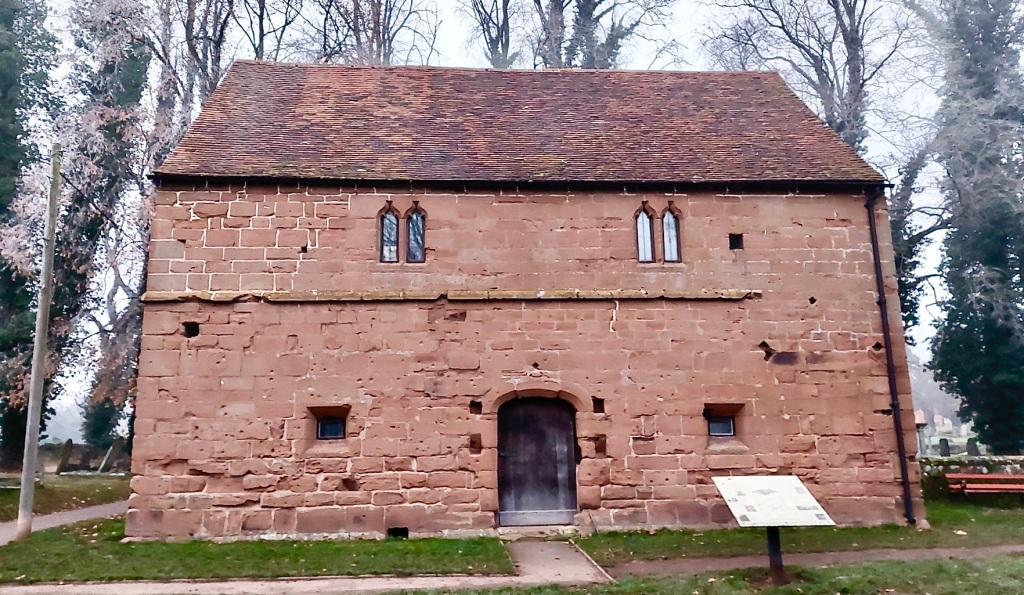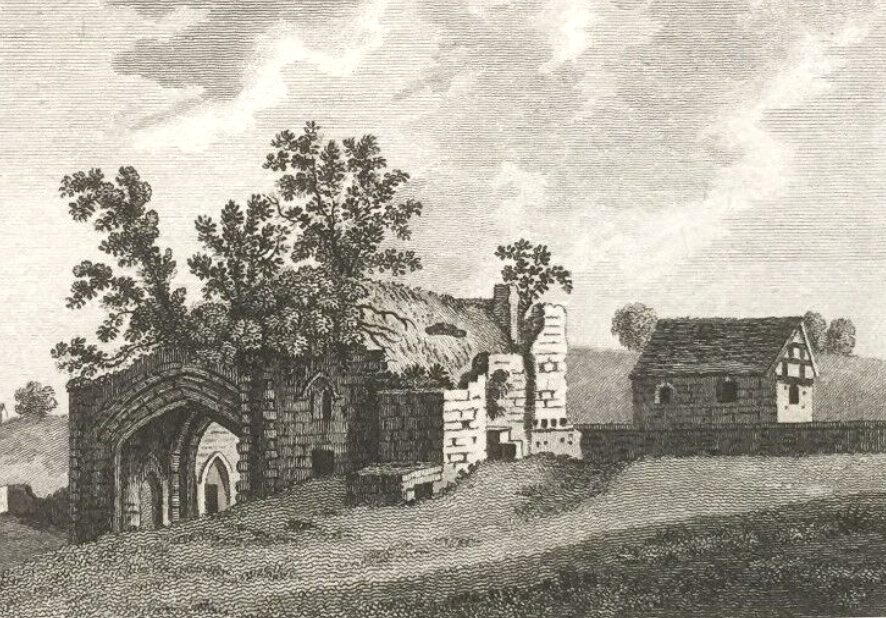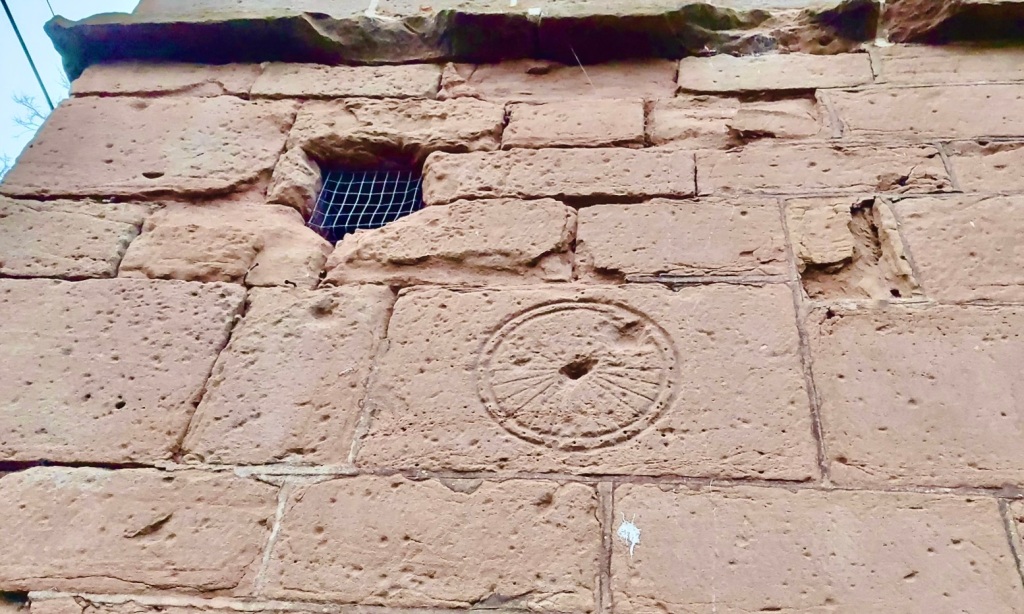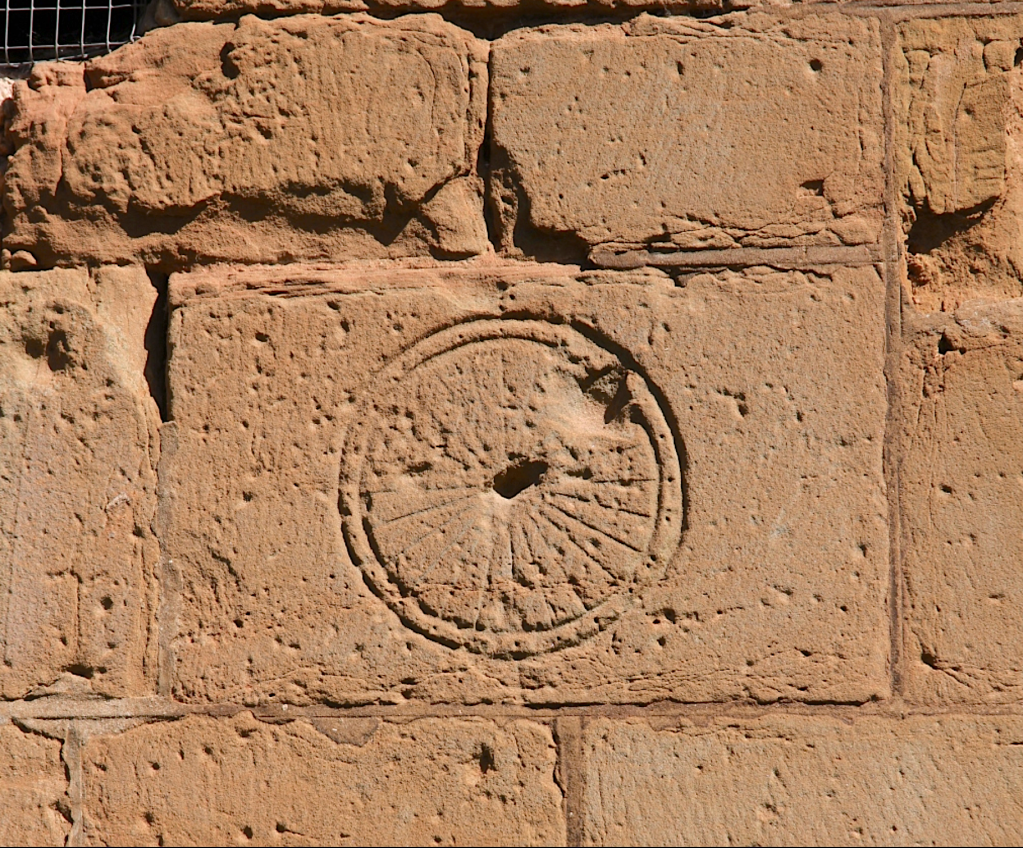
ABBEY BARN . KENILWORTH . WARKS
Kenilworth Castle has a long and intriguing history, with royal, civil and military significance over C7 centuries or so. There is an excellent Wiki entry HERE . Anyone who learnt history at any level will be transported back to the classroom. Simon de Montfort C13; the insulting gift of tennis balls from the French to Henry V; Lady Jane Grey; Civil War(s); slighting. The entry is erudite yet clear and concise.






In the grounds close to the C14 gatehouse is a small 2-storey building known as the Barn, now thought unlikely to have been built as, or used as, a barn. The general view seems also to be that it had no monastic function. There were 2 latrines, which makes me wonder if it might have been some sort of lodging house for low-level family, or for visitors with a servant or two. The barn now serves as the Kenilworth Abbey Museum & Heritage Centre.
For present purposes, the barn’s significance is the scratch dial LHS on the front of the building. It is relatively rare for a dial to be cut on a secular building. Where found, it is most likely to be on a barn (Bradford-on-Avon has one on its famous tithe barn).


DIAL
The dial is within a double circle. It has suffered from both erosion and damage – it has indeed been in the wars. There appears to be a complete set of 24 lines spaced fairly equally at 15º to form a complete circle of radials. Unusually I think, each line is matched to a small terminal pock on the ridge between the 2 circles. Those at 3, 4, and 5 have double pocks, perhaps an indication of the most important part of the day for observance. It corresponds with the canonical mid-afternoon hour NONE. The lines are also deeper cut (and thus less eroded), a common form of emphasis. It’s difficult to say whether the other more random pocks on the dial face were intended as part of it.
The gnomon hole is clearly not as it was originally. I expect there was a conventional central hole, (as the curve LHS hints) and at some stage something wedge-shaped was a clumsy substitute or replacement; or perhaps sword tips were sharpened there.


The dial is difficult to date. Various features suggest a later date than medieval. The full 24 hour ‘clock’; the reasonably accurate c15º divisions and double circle; the decorative use of the little pocks. Overall a degree of sophistication compared with earlier dials. My uneducated amateur guess is late C15 / early C16.
One mystery is why a dial was cut onto the barn at all – why did it need one? Perhaps my ‘occasional lodging’ theory has a place here – to assist outlying guests to comply with Castle timings for Mass, feasting, or jousting.



The building has been liberally decorated with musket shot (cf All Saints Alton Priors, below), most plausibly during the Civil War, in which the Castle played a significant part. For building mark / symbols / graffiti enthusiasts, there are quite a few masons’ marks to collect.

GSS CATEGORY: Scratch Dial; Scratch Dial on Barn; Scratch Dial on Secular Building
CREDITS: Erika Clarkson (dial detection, images); Motacilla (image OS CC); HE print archive; Kenilworth History and Archaeology Society; Warwickshire World Article by George Evans-Hulme
